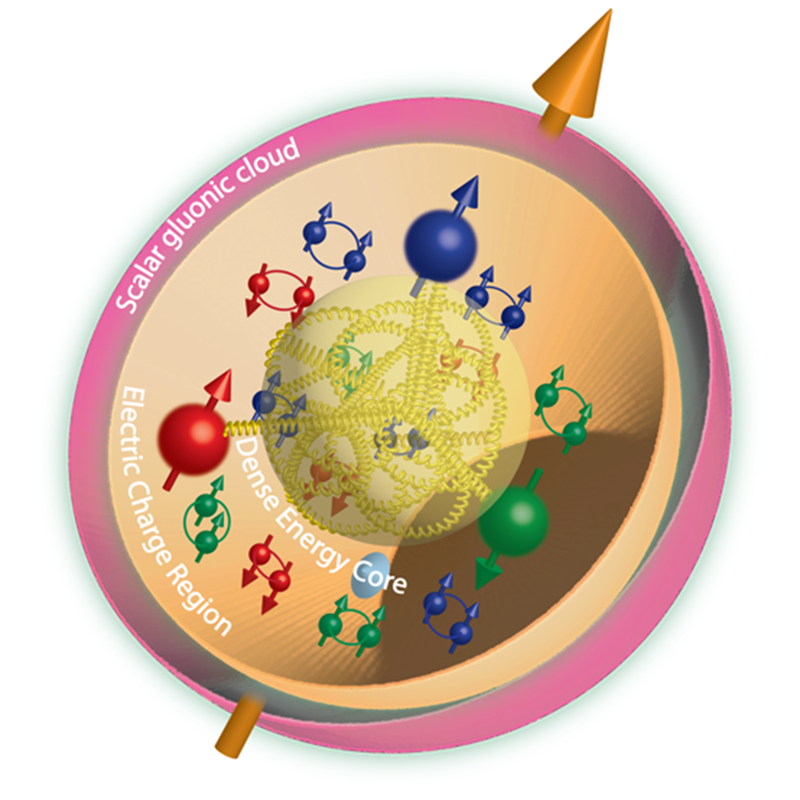Nuclear and particle physics are fundamentally puzzled by the distribution of mass in protons. The three valence quarks that make up a proton's core contribute very little to the proton's mass.

A proton’s valence quarks (blue, red, and green), quark-antiquark pairs, and gluons (springs). Scalar gluon activity (pink) extends beyond the electric charge radius (orange) that surrounds the gluonic energy core (yellow). Image Credit: Argonne National Laboratory
The majority of the mass is produced by complex quark dynamics, which includes their mobility and is mostly controlled by the strong force via gluon mediation. Researchers have discovered a new quantity that advances the knowledge of the mass of the proton. This measurement identified the main source of mass created by gluons as the core area of the proton.
The Impact
For many years, exact measurements of the proton's electric charge response have allowed nuclear scientists to estimate its size. This is due to the electrically charged quarks that make up the proton. Determining the proton-sized matter's size, however, is a more challenging task.
This is due to the fact that the elusive neutral gluons contribute to the proton's mass in addition to the charged quarks' mass and speed. Within the proton, these gluons bind both the quarks and themselves. A new discovery provides an insight into this mass region produced by gluon interactions.
This measurement reveals not only the mass radius due to the strong force but also its confining effect on the quarks, which goes considerably beyond the proton's electric charge radius.
Summary
Nuclear physicists have been teasing out details of the proton’s structure ever since its discovery in 1917. An important detail of the proton's structure is its size. The most commonly used measure for the size of the proton is its charge radius, which uses electrons to measure the spherical size of the proton’s electric charge.
This new measurement comes from the J/Ψ -007 experiment at the Thomas Jefferson National Accelerator Facility. It is different in that it used a small color dipole (the J/Psi particle) to reveal a spherical size and location of the gluons’ mass and its sphere of influence on the gluons in the proton.
Scientists made these measurements using the Continuous Electron Beam Accelerator Facility, a Department of Energy Office of Science user facility. In the experiment, protons were converted into J/Ψ particles by means of an intense electron beam.
The J/ Ψ particles provide information on the distribution of gluons inside the proton. For analysis, the experimenters entered these measurements into theoretical models. The outcome was the measurement of the mass radius of the gluon inside the proton.
It also suggested the existence of a powerful force field known as the confining scalar cloud, which has an impact on the quarks of the proton.
Funding
The research was funded in part by the Department of Energy Office of Science, Office of Nuclear Physics.
Journal Reference
Duran, B., et al. (2024). Determining the gluonic gravitational form factors of the proton. Nature. doi.org/10.1038/s41586-023-05730-4.